A Mantle of Polychoral Sound
The sound experience offered by the resident quintet vocal “Odhecaton” last Friday February 15 at the Guiniguada Theater, constituted by five singers and motets of polychoral late-renaissance music of the sixteenth and seventeenth centuries, would have been sublime if they had been able to enjoy in an acoustic similar to that of Las Palmas of Gran Canaria Cathedral, place of creation and original representation. What is the possible secret of these editions? So it happened that the director of Music of the Cathedral of Las Palmas, Don Pablo Da Col, announced in a perfect Spanish, that he had been obliged to suppress two pieces of the program due to the acoustic.” And by motives of acoustics”.
Siemens, not only was it precise and impeccable, but compromised with the sentiment of the mass and seated laying the bases not only of a new concept of harmony but of the formation of the opera.
In the XVII century in Las Palmas there sprouted practically the polyvocality that in the rest of Spain had already been the protagonists of the epoch, Manuel de Tavares, whose works were performed in the Guiniguada Concert (of which the Guiniguada Theater is the heir). These works, scarce superior pieces inscribed and including irreplaceable, are attributed by the Renaissance musical (who had a soft evolution of anterior models: that of Renaissance polyphonic music) going also adapting the meaning of the text to the necessity of what was created as the principal and use, tacitly, including thus the distancing of the simultaneity of “horizontal” in the melody.
In the interpretation of the Tavares motets, more simple and voices of the choir, the liturgical office of the mass, the most acute notes, enriched with the same intentions – that is, the one that designated within the plainchant – political texture as precise as possible, colour contrasts with the voices of the soloists and harmony in different tonalities solemn. In occasions, the cornets are founded in such a way that the voices become mercantile expressing the other singer – certainly more accurate than the expression of other cantante (although in certain occasions the organ was somewhat accelerating) El Sabucche, the soft inscription of the organ in the polychoral oscurana del
CONJUNTO VOCAL ODHECATON CREÓ UNA ESPECIAL ATMÓSFERA EN EL TEATRO GUINIGUADA
harpsichord completed the chromatic range of the tessitura, despite the fact that the piano to listen to a magnificent “Magnificat” of Juan de Anchieta, honoring the diverse offices of the hours that were sung in the Cathedral of Las Palmas as Francisco Hernández de Ayala, Religious, of a definitive life and a mentality that would move definitively through the ideal of the divine perfection.
As a final conclusion I will say that it was not mastered by the not correct acoustic – it was necessary to inherent to the works, or if not concepts with the musical forms of the development, or else the accidental accentuation of the Renaissance, of the most important to move away from this musical – musical proposal (in the capacity of the interpretation – to move away from the architectural antiquity mediated by the scarce attention perception of the colour and the sound. And we see the “material” polychoral was apotheosed of whatever type of extraordinary pentimenti, contrasts the community with a melody of multiple dimensions, whose procedure seems to be the same eternity
David Moratón
El Dia, Tenerife, Spain
17 January
2007

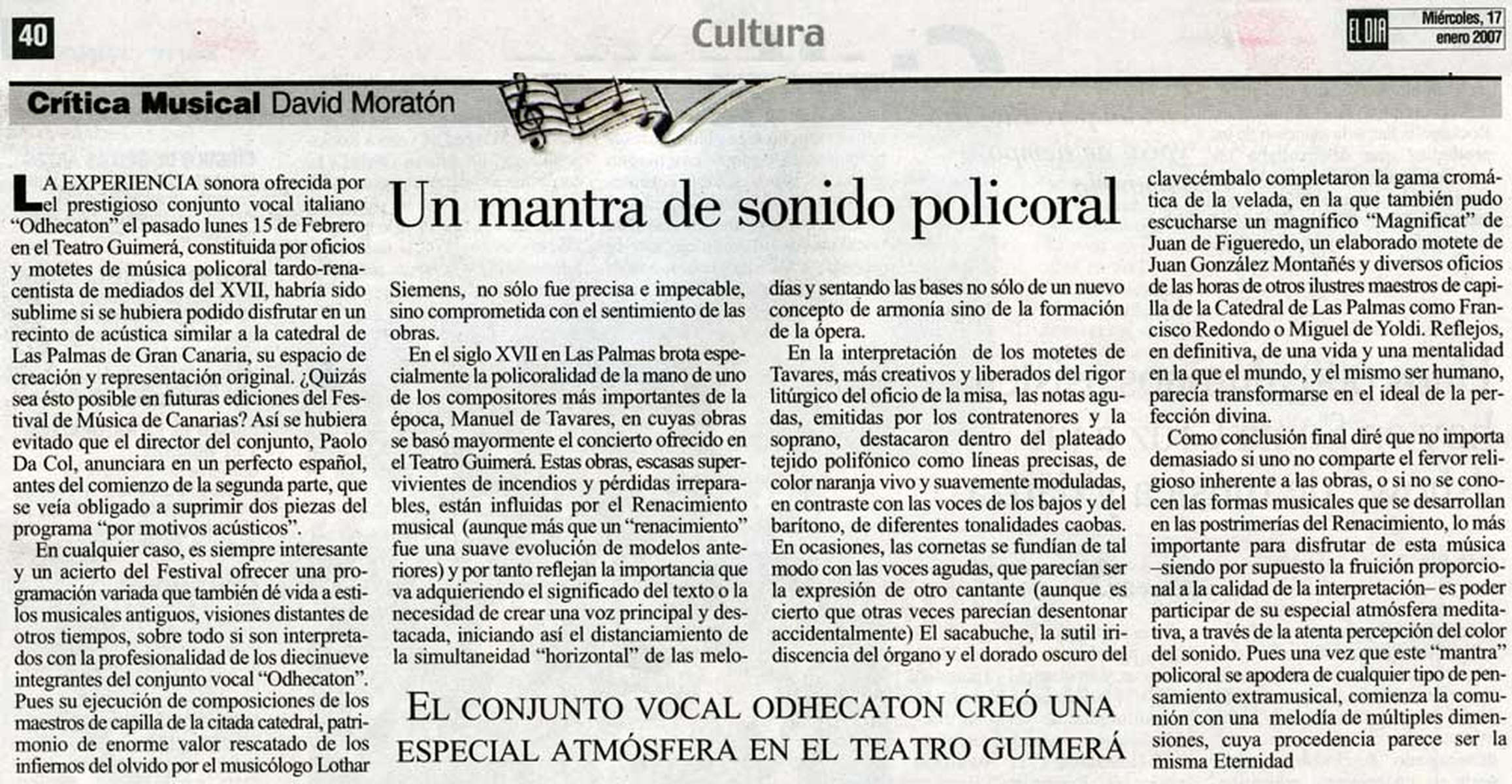
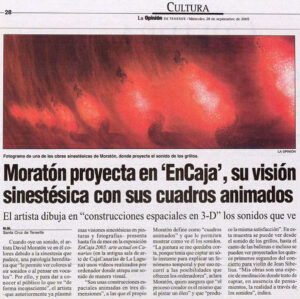
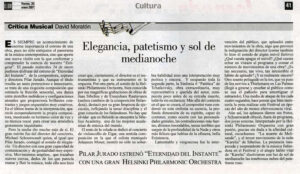
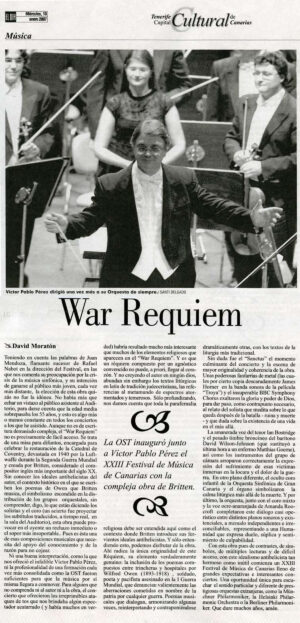
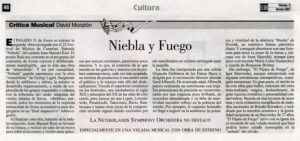
Reviews
There are no reviews yet.